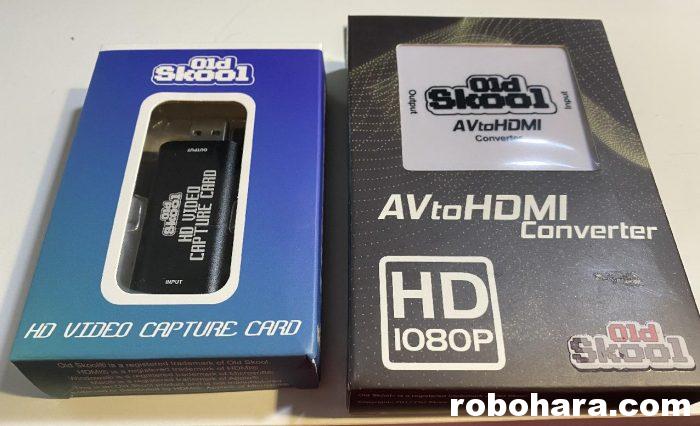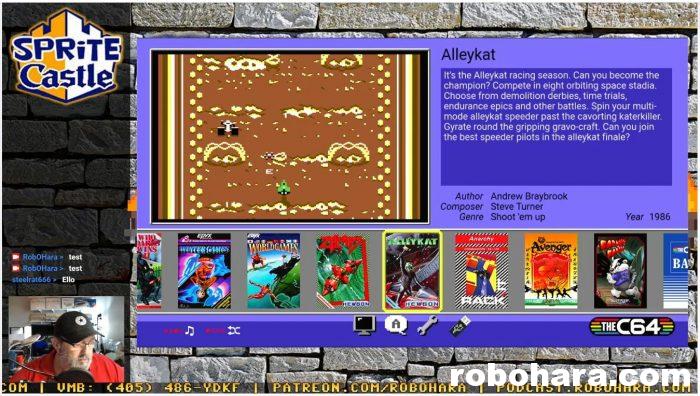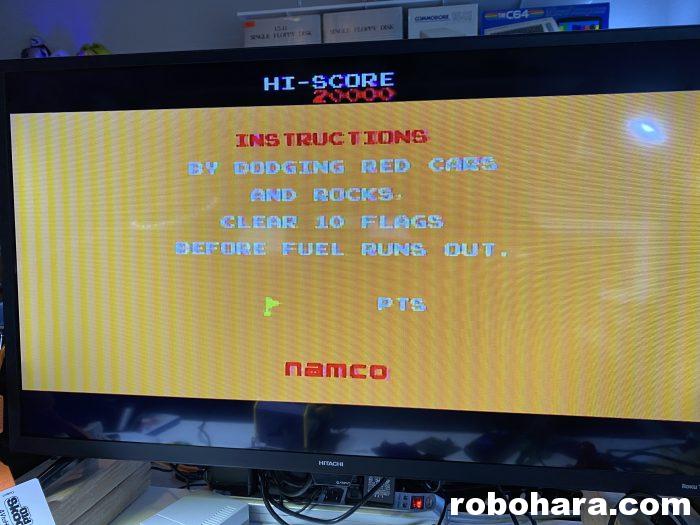I’ve been streaming games on Twitch (twitch.tv/RobOHara) for a few months now, and I am constantly adding software and hardware to my little bag of tricks. One limitation I’ve had is that I haven’t been able to pipe video from real consoles and computers directly into my computer. For a lot of streams emulation is fine, but to show off things like the MiSTer, THEC64, or any of my newer devices that output HDMI, I needed a capture device. Most of the devices I’ve seen for sale cost around $200, which is more than I was willing to spend. Recently I ran across a USB device from Old Skool that claimed it could do the same thing for a tenth of the price. At that price, I had to find out for myself how well it worked.

Although Amazon is full of HDMI capture devices in the $20 range, I ordered mine from J2Games.com. It’s no secret that independently owned businesses have been greatly affected by COVID-19, so I was glad to support one with my purchase. J2Games has been in the video game business for many years and a lot of the capture devices on Amazon looked like cheap garbage and had bad reviews, so ordering from J2Games was a no brainer. I ended up purchasing two items: the Old Skool Video Capture Card ($20), and the Old Skool AV-to-HDMI adapter ($20). I got my package in three days and even got free shipping on my order so, win/win.
Old Skool Video Capture Card
As far as I know, the primary (only?) reason for purchasing Old Skool’s HD Video Capture device is for capturing video from HDMI devices, which is how I’m using it and the scope of this review. The device is about the same length but slightly thicker than your average USB memory stick. The only other obvious difference is the HDMI port in the end of the device. Installation consisted of inserting the device into a USB port on my computer. Windows 10 instantly recognized the device, and that was that. Because my PC’s tower sits on the floor, I plugged the device into a USB hub, and had zero issues.
I use OBS to capture video and stream, so my first test was to see how difficult Old Skool’s capture device would be to set up inside OBS. I am glad to report that OBS instantly recognized the device as a Video Capture Device, so once I added that along with an Audio Capture Device to my OBS setup. For my first test I connected an HDMI cable from my THEC64 to the capture device, and the audio and video instantly appeared in OBS.

Not only did the audio and video appear, but I was surprised that the lag time was low enough for me to actually play games while monitoring the video in OBS. That is not to say there was no lag at all, but I was running THEC64 HDMI out into Old Skool’s USB device, which was plugged into a USB hub, which was routing the video into another program (OBS). The other caveat I’d offer is that I was playing Commodore 64 games. newer, faster games that require exact timing may not work as well. As for me, I was able to play a few rounds of Paradroid and Lode Runner with no problems.
In Amazon reviews of cheaper Chinese models, I saw several complains about these devices getting hot (as in, too hot to touch). I captured video with the Old Skool device for over an hour and did not detect any significant heat. While slightly warm to the touch, I have several USB sticks that get much hotter under normal use.
Since my initial test I also connected my PlayStation Mini console and my MiSTer to the Old Skool capture device, with the same results. The thing just works. PC installation time was around five seconds, and I had audio and video showing up inside OBS Studio within five minutes. I am not naïve enough to think that a $20 capture card is providing the same quality that a $200 (or more) device provides; that being said, I’ll let the video below speak for itself.
Old Skool AV-to-HDMI Adapter
Unlike their capture card, I can think of two distinct uses for Old Skool’s AV-to-HDMI Adapter. First, it can be used as a way to connect old school computers or video game consoles with composite (RCA-style) output into a television that only has HDMI inputs. As someone who recently purchased a 32″ flat screen television for his game room, I can tell you that out of the five or six televisions Sam’s Club had on display, only one of them had a composite input. The other obvious use for the Old Skool AV-to-HDMI Adapter is coupling it with Old Skool’s HDMI Capture Card, allowing the capture of RCA audio and video in OBS.
There are a couple of things to know about this adapter. The first is that it requires USB power. Inside the box you’ll find a USB cable, but you’ll need somewhere to plug it in. If you’re using the device on your computer you can plug it into a USB port to provide power, but if you’re using it in combination with the HDMI capture card, now you’ll be tying up two USB ports instead of one. If you’re using the adapter as a television input and your TV has a spare USB port, you can steal power from there. If neither of those options are available to you, you’ll need to provide your own power adapter for the USB cable to plug into. The other thing to take note of us that there’s a manual switch on the side of the device to switch between 720p and 1080p outputs. This is a setting you’ll probably only need to set once.
To test the adapter, I connected it to my new 32″ television and pulled out all my All-in-One joysticks from Jakks Pacific and TV Games. I tried multiple joysticks, and the results were… not great.

There are two issues with the video produced by the adapter, and I’m not sure which is worst. First is the weird vertical banding that is introduced by the device. It doesn’t make games unplayable, but it’s very noticeable. The other issue is the fact that the video is stretched to fit the screen. Given the fac that Almost anything you would connect via composite video would be in 4:3 format, it’s surprising that there’s not a hardware toggle on the device itself to switch between 4:3 and 16:9. I also learned that my new television does not have a manual way to adjust aspect ratios, so I was stuck with a stretched out picture. (The television’s built-in composite input correctly resized the input to 4:3.)
For a second test, I paired the AV adapter with the HDMI capture card. I ended up with the same results in OBS Studio: distorted vertical bands running through the screen, and a stretched picture. I could not find a way to resize the video source in OBS.

Summary
Old Skool Video Capture Card: This little capture card is worth every bit of its $20 price tag, and then some. Installation was quick and painless, and the quality was everything I expected. I’m sure $200 solutions do more, but I can’t imagine what.
Link: J2Games
>Old Skool AV-to-HDMI Adapter: Works if you have no other way to get composite input into an HDMI device, but the results are stretched to fit widescreen, and some distortion is introduced. Games are playable, but the quality isn’t perfect.
Link: J2Games
Finally, here is a quick video demonstrating the quality of the HDMI capture card.

Hey Rob, I’m Nate from boba Fett youth. I just came across your article from 2016 and comments were closed on it and I didn’t know how it’s to get hold of you. It’s so hard to imagine what you said went down but I think it was a very fun article. I enjoyed it thoroughly and probably more than if it was actually a real interview. Thanks for the mention <3